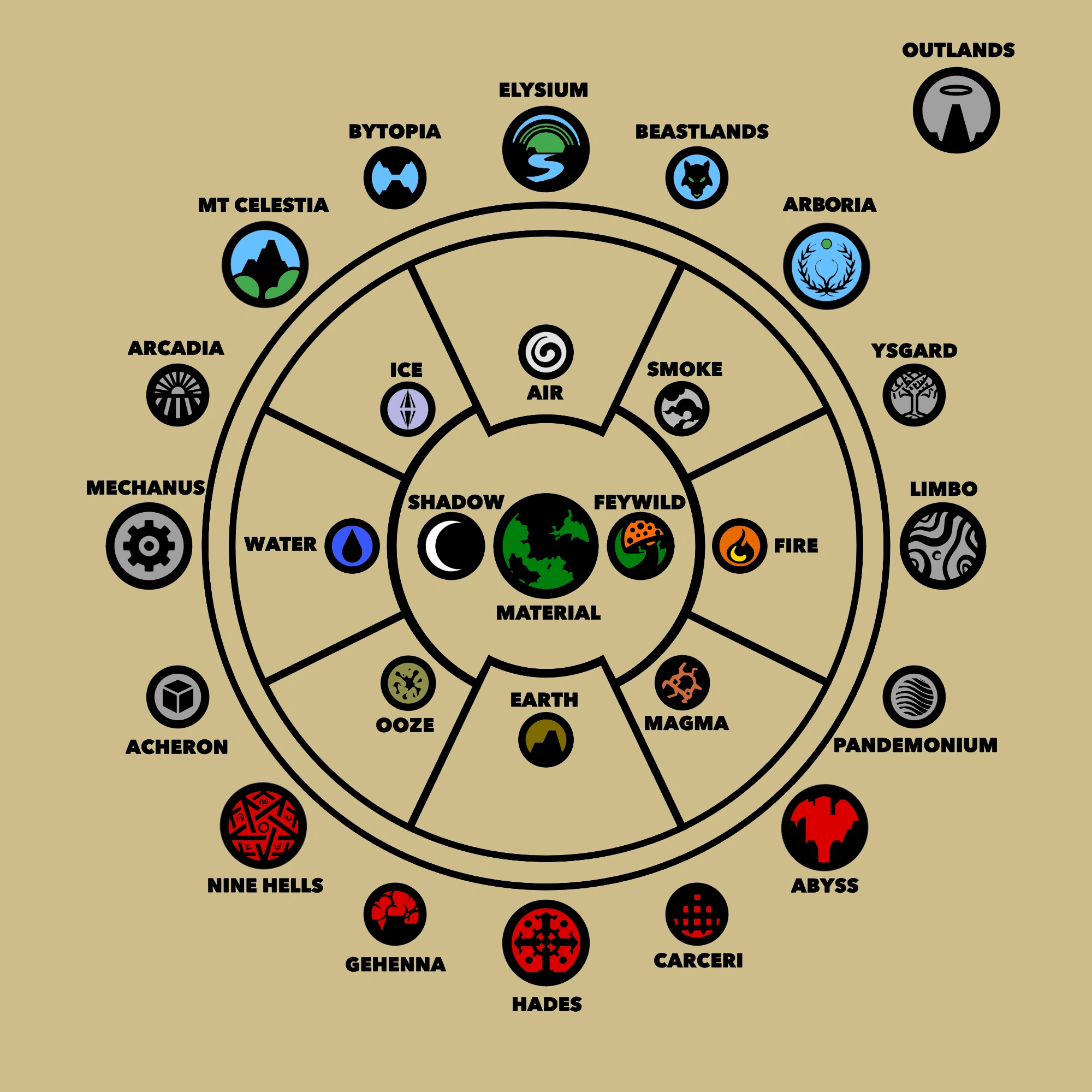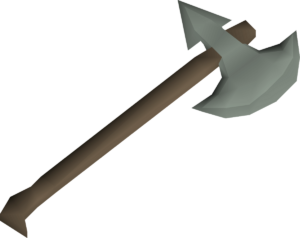There are 25 planes of existence in the cosmology of Dungeons & Dragons:
-
Material Plane: This is the primary plane where most campaign settings and adventures take place. It is the world as we know it.
-
Shadowfell: A dark and gloomy reflection of the Material Plane, associated with death and decay.
-
Feywild: A vibrant and magical plane that mirrors the Material Plane but is infused with wild magic and the essence of the fey.
-
Astral Plane: A realm of thought and dream, often used for travel between planes.
-
Ethereal Plane: A parallel plane that coexists with the Material Plane but is usually invisible and intangible.
-
Inner Planes: These include the Elemental Planes (Earth, Air, Fire, Water), where pure elemental forces dominate.
-
Outer Planes: There are 16 Outer Planes, each aligned with different moral and ethical alignments. They serve as homes to various deities and other powerful beings. Good-aligned planes are known as the Upper Planes, while Evil-aligned planes are called the Lower Planes:
-
The Seven heavens of Mount Celestia (Lawful Good)
-
Arcadia (Lawful Neutral/Good)
-
Mechanus (Lawful Neutral)
-
Acheron (Lawful Neutral/Evil)
-
Nine Hells (Lawful Evil)
-
Gehenna (Neutral/Lawful Evil)
-
Hades (Neutral Evil)
-
Carceri (Neutral/Chaotic Evil)
-
The Abyss (Chaotic Evil)
-
Pandemonium (Chaotic Neutral/Evil)
-
Limbo (Chaotic Neutral)
-
Ysgard (Chaotic Neutral/Good)
-
Arborea (Chaotic Good)
-
Beastlands (Neutral/Chaotic Good)
-
Elysium (Neutral Good)
-
Bytopia (Neutral/Lawful Good)
-
Outlands (True Neutral)
-
These are the major planes, but there are also demiplanes, pocket dimensions, and other smaller planes that can exist in the D&D multiverse. Keep in mind that Dungeon Masters have the flexibility to create and modify planes for their specific campaign settings.
Traveling between planes can be accomplished with spells (Plane Shift, Ehterealness, Astral Projection) or via portals.




